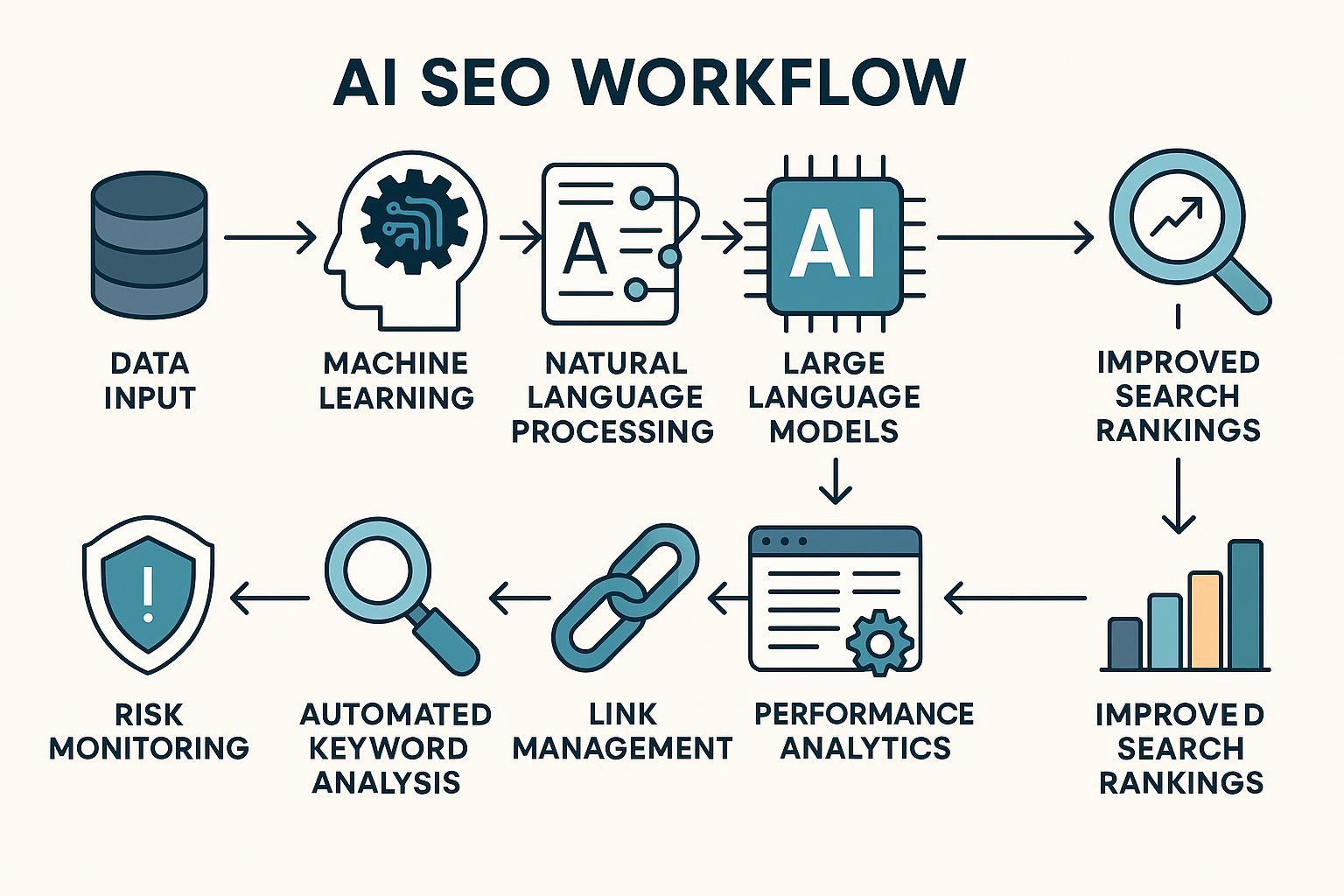What is AI SEO (AISO)? Definition, Workflow, and Modern Applications

Definition of AI SEO (AISO)
AI SEO (AISO) stands for Artificial Intelligence Search Engine Optimization. According to Salesforce and Search Engine Land, it refers to the application of artificial intelligence technologies—such as machine learning (ML), natural language processing (NLP), and large language models (LLMs)—to automate, optimize, and enhance the traditional SEO process. AI SEO streamlines keyword analysis, content optimization, technical adjustments, and ongoing performance tracking through scalable, data-driven automation.
How Does AI Power Modern SEO?
AI SEO is built on three primary technological pillars:
- Machine Learning (ML): Analyzes ranking data, user behavior, and site performance trends at scale, allowing algorithms to adaptively optimize content and structure.
- Natural Language Processing (NLP): Interprets the semantic meaning of text, facilitating context-aware keyword targeting, topic clustering, and content gap discovery.
- Large Language Models (LLMs): Tools like GPT and Gemini generate contextually rich, SEO-optimized copy and power advanced semantic matching, making search results more relevant and comprehensive.
Typical AI SEO Workflow:
- Data Collection: Harvest SERP data, competitor metrics, and site analytics.
- Feature Extraction: ML processes and ranks ranking factors.
- NLP-driven Analysis: Uncover keyword gaps and content opportunities.
- AI Content Generation: LLMs craft or optimize on-site copy.
- Automated Optimization: Adjust meta tags, schema, internal links, and technical elements.
- Performance Feedback: Continuous monitoring and learning for further improvement.
(See the visual workflow diagram above for a step-by-step representation.)
Industry Use Cases
- Automated Keyword Research: LLMs and ML rapidly identify, cluster, and prioritize keywords based on search intent.
- Predictive SEO: AI forecasts trending topics and algorithm shifts, keeping content ahead of competitors.
- Scale Content Optimization: From blog posts to landing pages, AI can recommend or directly update meta data, headings, and copy across large sites.
- SERP Analysis and Opportunity Discovery: Refined algorithms power deep competitor and SERP analysis, revealing new content targets or optimization tactics.
- Performance Analytics: Automatic tracking and reporting of ranking improvements and flagged drops.
Organizations like Salesforce and major agencies leverage AI SEO for speed, scalability, and improved SERP results (BrightEdge).
AI SEO vs. Traditional SEO: Key Differences
- Scale: AI handles far greater data volumes and site pages than manual methods.
- Adaptability: Systems continuously learn and adjust strategies versus relying on static best practices.
- Automation: Repetitive tasks (e.g., title tags, internal linking) can be performed instantly.
- Semantic Precision: NLP and LLMs enable deeper, intent-focused optimizations beyond keyword stuffing.
Traditional SEO still requires strategic oversight, but AI SEO amplifies results through automation and intelligent decision-making.
Risks, Limitations, and Future Trends
- Algorithm Policy Risks: Search engines like Google periodically update their guidelines on AI-generated content—ongoing human review is essential (Search Engine Land).
- Quality Control: Not all AI outputs are accurate or relevant; unchecked automation can propagate errors at scale.
- AI Reliance: Overdependence may overlook strategic creativity or nuanced market needs.
- Rapid Evolution: Techniques and best practices evolve quickly; continuous learning and adaptability are needed.
Related Terms and Further Reading
- Natural Language Processing (NLP): Machines understanding and processing human language.
- Large Language Models (LLMs): Deep-learning models (like GPT) trained on massive text corpuses for high-quality content generation.
- SERP Analysis: Systematic study of search engine results pages to inform optimization efforts.
- AI Content Generation: The process of using AI to automatically create written material for SEO and marketing.
References:

